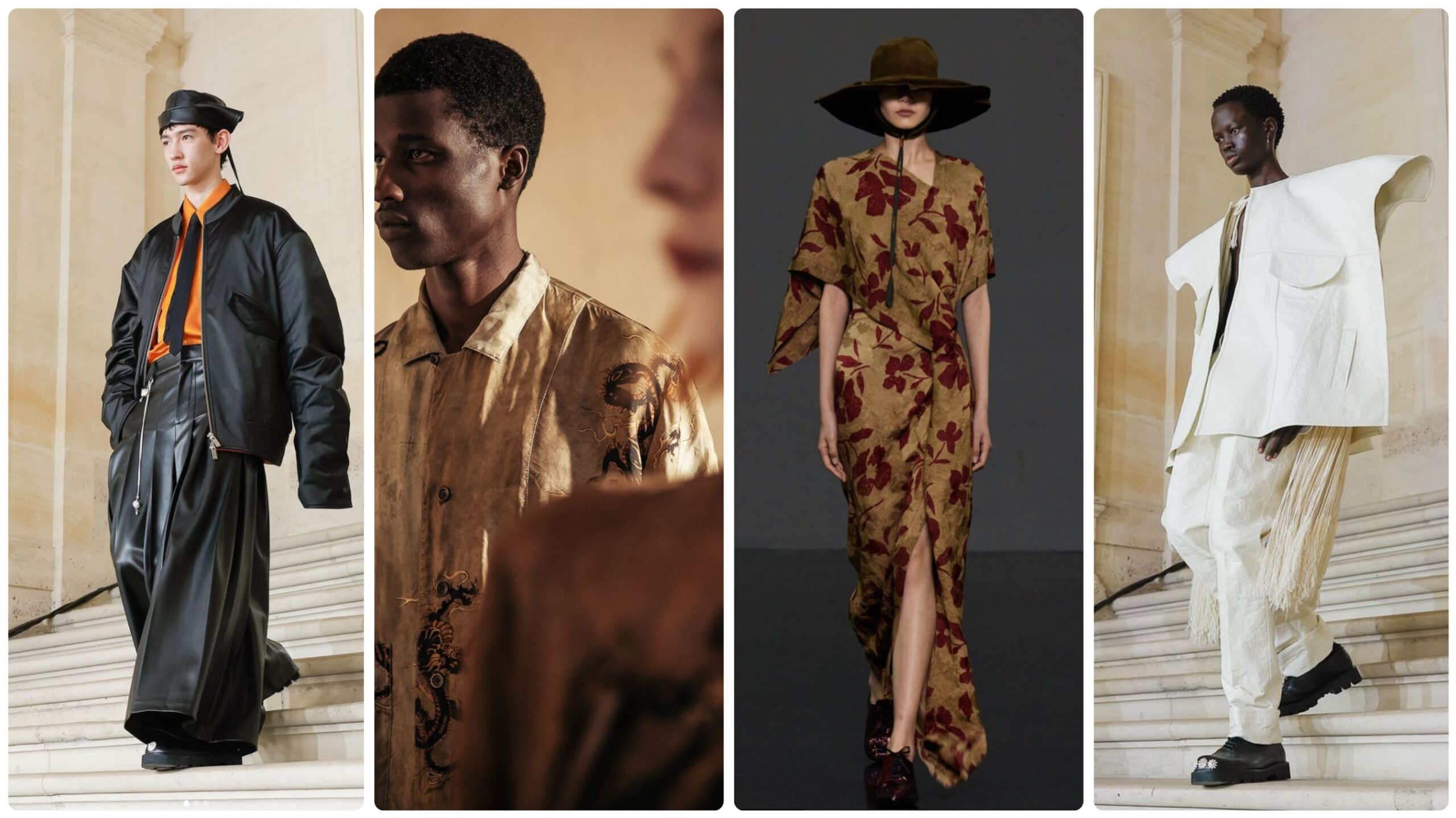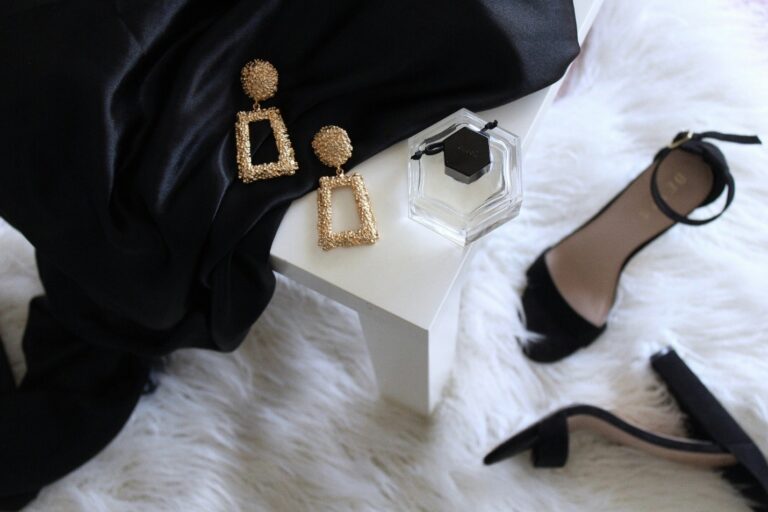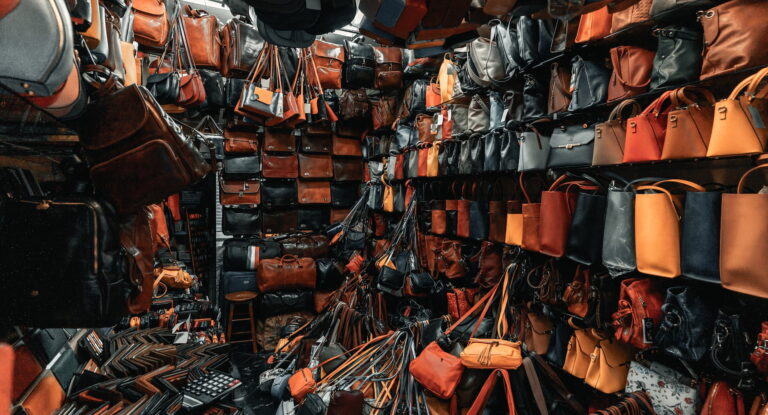In recent years, at fashion shows and various events, many domestic and international celebrities have been seen wearing clothing from Chinese fashion brands, and an increasing number of Chinese designer brands are entering the international spotlight. At the 2023 Met Gala red carpet, Cardi B appeared in a specially tailored camellia dress designed by Chinese fashion designer Chen Peng. At the Panama Film Festival, Kim Jennie chose a bow bandeau from the Chinese designer brand SHUSHU/TONG. Dua Lipa and Kiko Mizuhara also wore Rui on magazine covers. The trend of transitioning from ‘made in China’ to ‘Designed by China’ is becoming increasingly evident.

Download our China luxury market report
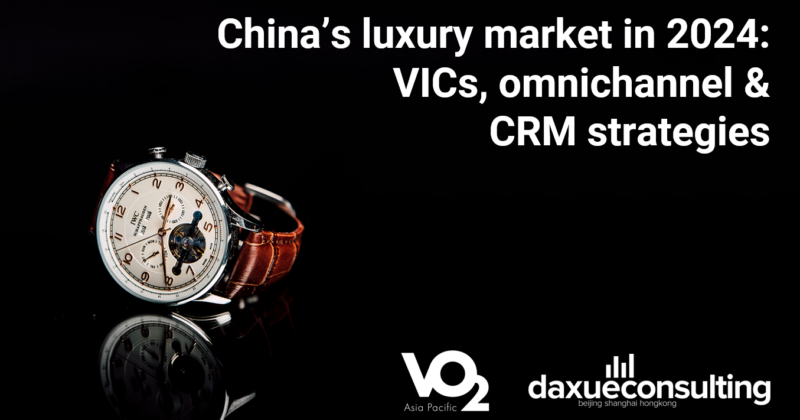
Chinese creativity: fusion of traditional and modern
Domestic brands have leveraged the creative abilities of their designers to gain international recognition, with many of these brands predominantly embodying Western aesthetics. Guo Pei, the first Chinese haute couture designer, said, “I am also inspired by some Western cultural elements, but Chinese culture is always in my blood and the source of my artistic creation.” Including cultural elements in their designs presents a significant opportunity for Chinese designers to enhance their presence domestically while also introducing innovative styles on the global stage. Nowadays, more and more Chinese designers are beginning to make products with national styles, integrating their own stories into their designs, and realizing the perfect combination of Chinese and Western elements. Beneath this trend, Chinese consumers anticipate seeing more Chinese elements showcased on the global stage, hoping that the Guochao trend will garner greater international attention, thereby challenging the dominance of Western trends on the international design platform.
Uma Wang
Recognized by Vogue Italia as one of their emerging designers, Wangzhi’s namesake label Uma Wang officially entered Paris Fashion Week in 2017, and now her latest collection can be seen in every season of Women’s Week. Coming from a family rooted in traditional Chinese medicine, Uma Wang’s upbringing has deeply influenced her connection to Chinese culture, reflected in the subtle and understated characteristics of her clothing, devoid of overt flamboyance. She employs fabric as a medium to weave narratives, innovatively combining textiles to evoke abstract and delicate emotions through the aging, crumpling, and deconstruction of materials, infusing garments with a sense of soul. Uma holds the belief that it is both natural and esteemed for artworks to embody the culture and aesthetics of their originating country. This natural process results in creations that seamlessly blend the characteristics of both China and the Western world.
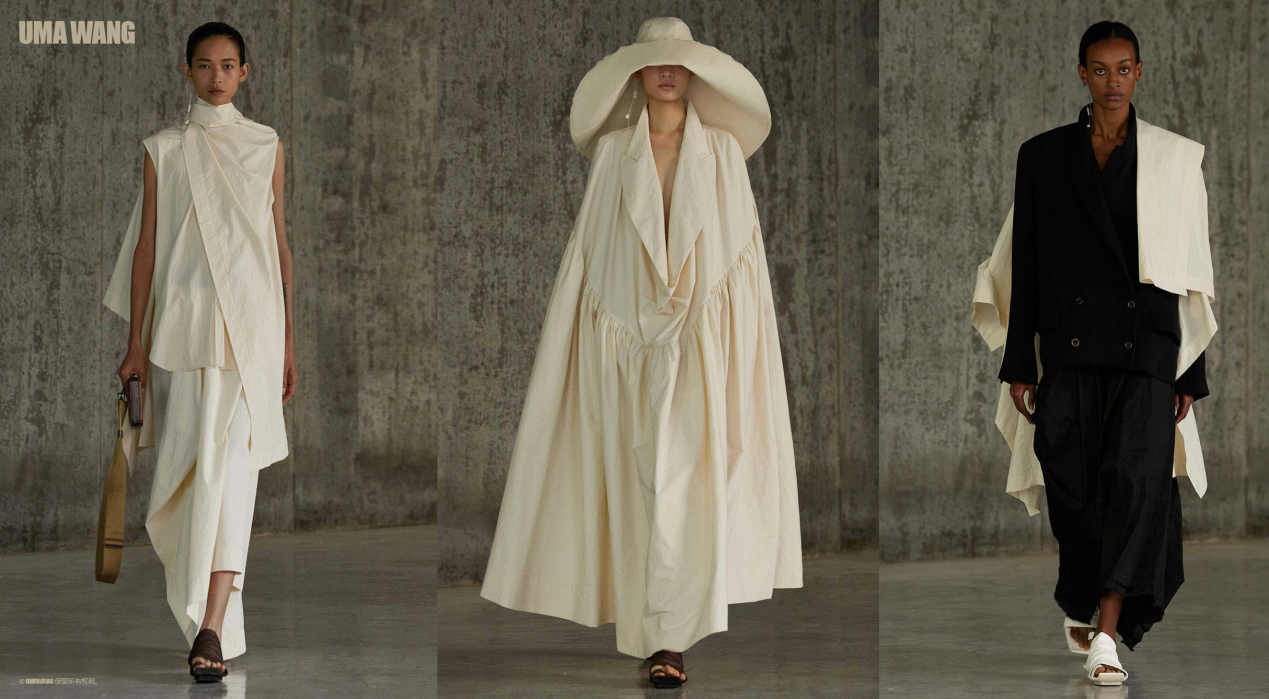
SEAN SUEN
After captivating audiences at Paris Fashion Week in 2018 with a runway presentation inspired by the last emperor Puyi, the founder of SEAN SUEN, Sun Xiaofeng, drew further inspiration from his hometown’s ‘ghost city‘, Fengdu (Chongqing). Infusing his narrative with Buddhist motifs, he seamlessly melded cassocks with suits, offering a fresh interpretation. SEAN SUEN’s Autumn/Winter 2023 collection delves deeper into traditional Yi (彝) costume elements, aiming to provoke introspection on human self-awareness through the lens of ancient Eastern culture. Sun Xiaofeng utilizes garments to articulate his reverence for nature and the cosmos while showcasing the boundless potential of Chinese elements to a global audience.

Songmont
Established in 2013, Songmont is a youthful state-owned brand that draws inspiration from the rich heritage of the East, incorporating the aesthetics of this cultural tradition into each product. One notable aspect of the brand’s widespread recognition is its bag repair team, comprised of grandmothers with an average age of over 60 years old. Even after retirement, they continue to enrich their leisure time by integrating their professional knowledge and skills into their creative process, infusing each bag with a unique sense of warmth and personal style. Songmont not only integrates elements of traditional Chinese architecture into its products but also consistently demonstrates support for female empowerment. It is this combination of expertise and geniality that enabled the brand to achieve the top position in domestic luggage and bag sales on Tmall during the 2022 Double 11 festival within less than four years of entering the e-commerce platform.
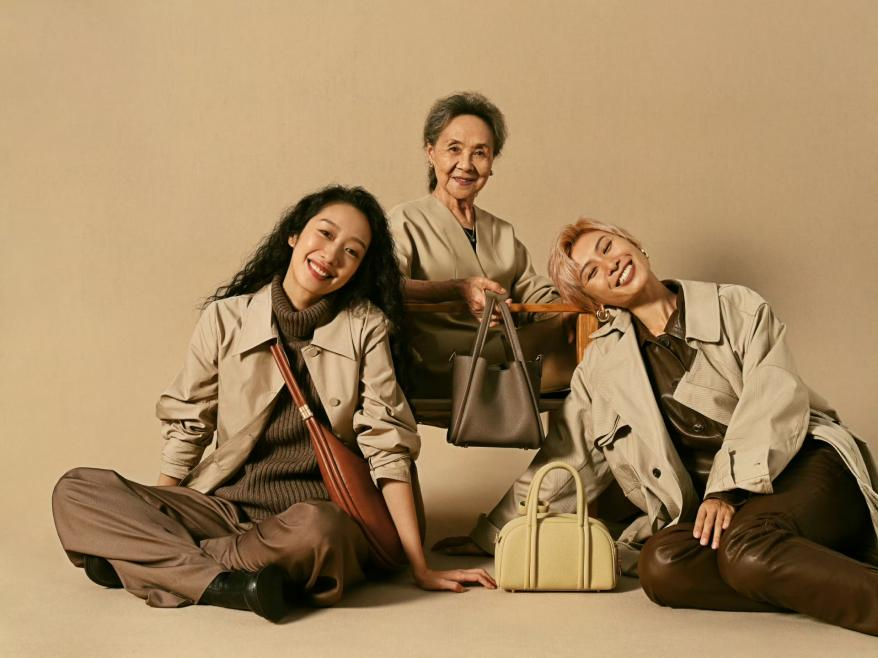
Exploring design: Potential obstacles and problems
1. Better grasp of Chinese and Western cultures and markets
In recent years, an increasing number of fashion brands have embraced traditional Chinese elements in their designs. However, the way these elements are perceived internationally often differs from their domestic interpretation. When Chinese and Western influences intersect, if missteps occur, can lead to cultural conflicts or misunderstandings. Such missteps can significantly impact a brand’s image and reputation. For Chinese designer brands with a global audience, incorporating Chinese cultural elements becomes an artful balancing act. They strive to harmonize the essence of Chinese heritage with an international sensibility. The goal is to create designs that resonate both with their home audience and overseas consumers, without alienating either group.
In this intricate interplay, designers tread carefully, ensuring that the fusion of Chinese and Western elements is not only aesthetically pleasing but also culturally respectful. By maintaining this equilibrium, they navigate the rich tapestry of Chinese culture while appealing to a diverse global clientele.
2. Reach brand balance across domestic and international markets
For the market, the ups and downs of the pandemic have brought great challenges to the apparel industry, and Chinese designer brands are not immune. Luxury clothing brands have borne the brunt of the pandemic, losing around USD 43 billion globally in 2021, and small brands are not counted. In 2020, due to pandemic control measures, Chinese fashion brands could not participate in Milan Fashion Week and Paris Fashion Week, resulting in a decrease in fashion week revenue. COVID-19 didn’t devastate Chinese designers but highlighted the necessity of striving for a balance in the brand focus. SEAN SUEN has begun to increase the proportion of domestic Multi-brands stores (买手店), and Feng Chen Wang is also trying to balance the ratio of more than 100 stores in China and abroad. For Chinese brands that have just gone to sea or are ready to go to sea, such a balance can reduce risks in the single market and exploit growth opportunities in both markets, thus accelerating the healthy global growth of the brand.
3. The shortage in the Chinese menswear market
Chinese designer brands are encountering an issue regarding the disproportionate distribution of men’s and women’s clothing. Sun Xiaofeng, the founder of a Chinese men’s clothing designer brand, acknowledges this challenge, noting, “There is a scarcity of standalone men’s clothing stores. Men’s clothing brands are often relegated to being sold within multi-brand or women’s clothing stores. This situation is largely attributed to insufficient awareness of men’s fashion among Chinese consumers and their relatively lower frequency of consumption.” The revenue generated in the Men’s Apparel market in China amounts to RMB 755.5 billion in 2024, and the market is expected to have an annual growth rate of 4.11% (CAGR 2024-2028). Despite this, the majority of domestic designer brands currently focus predominantly on women’s wear, with only a limited presence in men’s fashion. With the rapid expansion of the men’s wear market, domestic designer brands risk missing out on significant market opportunities if they fail to cater to the growing demand for men’s fashion.
4. Enhance consumer trust in the store to facilitate smoother brand distribution
Designer brands reach end consumers mainly through multi-brand stores. A personalized and mature multi-brand store can form a strong brand effect, which can lead the trend and promote new brands. From 2020 to 2023, the number of new multi-brand stores opened by Chinese designer brands has increased year by year, of which the number of new stores opened in 2023 has more than doubled over the same period in 2020, and more designer brands have gone offline and opened physical stores that represent the brand image. Despite the promising market, Chinese designers have long faced a lot of obstacles. For instance, more and more brands tend to enter the mainstream high-end malls in popular cities such as Beijing and Shanghai, but their appeal is limited to these cities. Guochao can be instrumental for these brands to penetrate and enhance their brand awareness. Nevertheless, despite the shop having the proper authorization, many consumers still harbor doubts, particularly concerning authenticity. This skepticism from buyers extends to the brand itself, complicating the brand’s distribution efforts.
Balancing Chinese and Western influences in designer brands
- More and more Chinese designer brands are emerging on the international stage.
- Chinese designers began to draw inspiration from Chinese culture and create works with national characteristics, and the exquisite fusion of Chinese and Western works won recognition from experts and the market.
- Domestic fashion brands face the problem of uneven balance between Chinese and Western cultures and markets.
- Domestic luxury brands lack appeal outside popular cities and need to open up a larger domestic market.
- Most of the designer brands are concentrated in the women’s wear industry, and the men’s wear market with huge room for growth is waiting for more brands to open up.


